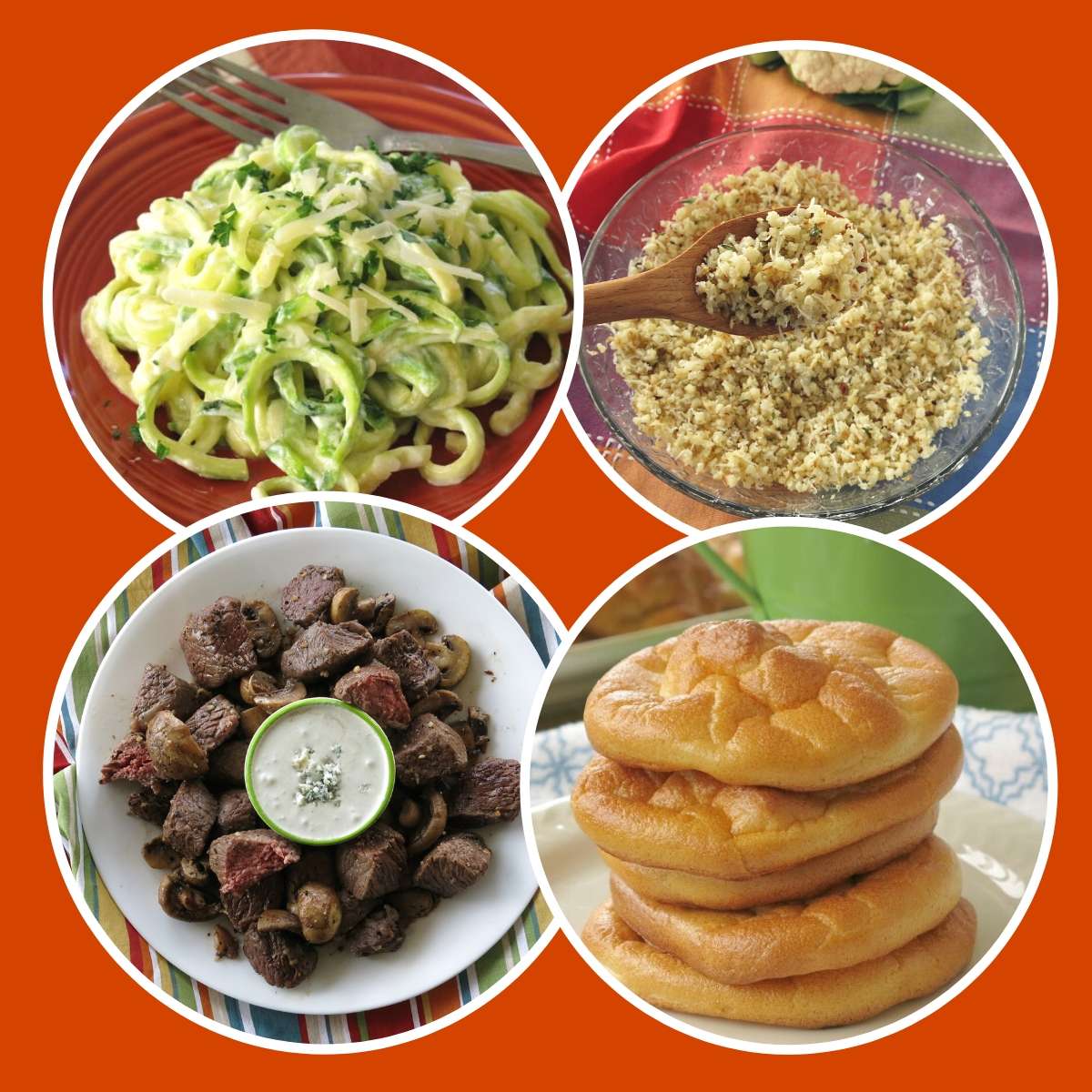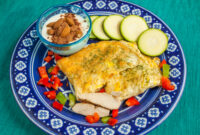South Beach Diet Phase 1 desserts offer a delicious and surprisingly varied culinary landscape. This guide explores the principles of Phase 1, highlighting permitted ingredients and showcasing delectable recipes that satisfy sweet cravings without derailing your dietary progress. We’ll delve into the science behind the choices, examining the role of low-glycemic sweeteners and exploring creative flavor combinations to ensure your desserts are both healthy and enjoyable.
We’ll cover a range of recipes, from berry-based delights to decadent dark chocolate treats, all while adhering to the strict guidelines of the South Beach Diet’s initial phase. Understanding the nutritional content of each recipe is key, and we’ll provide detailed breakdowns to help you make informed choices that support your overall health goals. This guide aims to equip you with the knowledge and inspiration to navigate the world of Phase 1 desserts with confidence and culinary creativity.
Understanding the South Beach Diet Phase 1
The South Beach Diet Phase 1 is a rigorous, short-term approach designed to jumpstart weight loss and improve metabolic health. It emphasizes rapid blood sugar stabilization and the reduction of insulin resistance, setting the stage for long-term healthy eating habits. This initial phase is characterized by strict limitations on certain food groups, with a focus on nutrient-dense, unprocessed options.
The core principles of the South Beach Diet Phase 1 revolve around eliminating foods that cause rapid spikes in blood sugar. This rapid fluctuation in blood sugar is believed to contribute to weight gain, cravings, and energy crashes. By restricting these foods, the diet aims to curb hunger, stabilize energy levels, and promote fat burning. The emphasis is on lean protein, healthy fats, and non-starchy vegetables, ensuring adequate nutrient intake while minimizing carbohydrate intake.
Permitted and Restricted Food Groups During Phase 1
Phase 1 of the South Beach Diet permits a range of foods, focusing on those with a low glycemic index (GI). These foods are less likely to cause rapid spikes in blood sugar. Conversely, high-GI foods, which are rapidly digested and absorbed, are strictly limited or eliminated. The goal is to prioritize nutrient-rich options that provide sustained energy and support satiety.
- Permitted Foods: Lean proteins (fish, poultry, beans, tofu, eggs), healthy fats (olive oil, avocados, nuts, seeds), non-starchy vegetables (leafy greens, broccoli, peppers, cauliflower), and limited amounts of whole grains (such as small portions of oatmeal or quinoa).
- Restricted Foods: Sugary drinks, processed foods, refined carbohydrates (white bread, pasta, pastries), sugary fruits (bananas, grapes), high-fat dairy products, and most alcohol.
Rationale Behind the Dietary Restrictions in Phase 1
The restrictions in Phase 1 are designed to address the body’s immediate response to food intake. By eliminating high-GI carbohydrates and processed foods, the diet aims to minimize insulin spikes. High insulin levels can promote fat storage and contribute to weight gain. Restricting sugary foods and drinks directly addresses a major source of empty calories. The focus on lean protein and healthy fats promotes satiety and helps to regulate appetite, making it easier to adhere to the dietary plan. The inclusion of non-starchy vegetables provides essential vitamins, minerals, and fiber, supporting overall health and well-being. The short-term nature of this phase prepares the body for a more sustainable approach to eating in subsequent phases.
Recipes and Variations
South Beach Diet Phase 1 desserts, while restrictive, can still be surprisingly delicious and satisfying. The key is focusing on natural sweetness from fruits and the rich flavors of nuts and unsweetened cocoa. The following recipes demonstrate how to create flavorful treats while adhering to the Phase 1 guidelines, which primarily exclude added sugars, grains, and many fruits high in fructose.
Adapting existing recipes often involves substituting high-fructose ingredients with Phase 1-approved alternatives. For example, you might replace refined sugar with a small amount of stevia or erythritol (always check the acceptable daily intake), and swap out white flour for almond flour or coconut flour. Remember that portion control is crucial, even with healthier ingredients.
Berry Chia Seed Pudding
This recipe utilizes the natural sweetness of berries and the healthy fats and fiber from chia seeds to create a creamy, satisfying dessert.
Ingredients:
* 1 cup mixed berries (strawberries, raspberries, blueberries)
* 1/4 cup chia seeds
* 1 cup unsweetened almond milk
* 1 teaspoon vanilla extract
* Stevia or erythritol to taste (optional)
Instructions:
1. Combine all ingredients in a bowl.
2. Stir well and refrigerate for at least 4 hours, or preferably overnight, to allow the chia seeds to absorb the liquid and create a pudding-like consistency.
3. Serve chilled. The pudding can be garnished with a few extra berries for added visual appeal and flavor.
Chocolate Avocado Mousse
This surprisingly decadent dessert uses avocado for creaminess and unsweetened cocoa powder for rich chocolate flavor. The avocado provides healthy fats and fiber, contributing to satiety.
Ingredients:
* 1 ripe avocado
* 2 tablespoons unsweetened cocoa powder
* 2 tablespoons unsweetened almond milk
* 1 teaspoon vanilla extract
* Stevia or erythritol to taste (optional)
Instructions:
1. Combine all ingredients in a food processor or blender.
2. Blend until smooth and creamy.
3. Refrigerate for at least 30 minutes to allow the flavors to meld and the mousse to chill.
4. Serve chilled. A sprinkle of unsweetened cocoa powder adds a sophisticated touch.
Almond Butter and Coconut Flour Cookies
These cookies offer a satisfying crunch and nutty flavor, relying on almond butter for richness and coconut flour for binding.
Ingredients:
* 1/2 cup almond butter
* 1/4 cup coconut flour
* 1 egg
* 1 teaspoon vanilla extract
* Stevia or erythritol to taste (optional)
Instructions:
1. Preheat oven to 350°F (175°C).
2. Combine all ingredients in a bowl and mix thoroughly. The dough will be quite thick.
3. Roll the dough into small balls (about 1 inch in diameter) and place them on a baking sheet lined with parchment paper.
4. Flatten the balls slightly with a fork.
5. Bake for 10-12 minutes, or until the edges are lightly golden brown.
6. Let the cookies cool on the baking sheet before serving.
Challenges in Creating Phase 1 Desserts
Creating delicious and satisfying desserts within the Phase 1 restrictions presents certain challenges. The limited ingredient list can make achieving desired textures and sweetness levels difficult. Many common dessert ingredients, such as refined sugar, flour, and high-fructose fruits, are prohibited. This necessitates creative substitutions and careful attention to portion sizes to prevent the desserts from tasting bland or overly dense. Finding the right balance of flavors and textures requires experimentation and a willingness to adapt recipes. The reduced sweetness can also be a challenge for those accustomed to sweeter treats; however, the palate often adjusts over time.
Closure
Mastering the art of South Beach Diet Phase 1 desserts unlocks a world of satisfyingly sweet treats without compromising your health goals. By understanding the permitted ingredients, experimenting with low-glycemic sweeteners, and mastering a few key recipes, you can enjoy delicious and guilt-free desserts throughout your dietary journey. Remember to focus on fresh, whole ingredients and prioritize balanced nutrition for optimal results. Embrace the challenge, explore the possibilities, and savor the sweet rewards of healthy eating.



